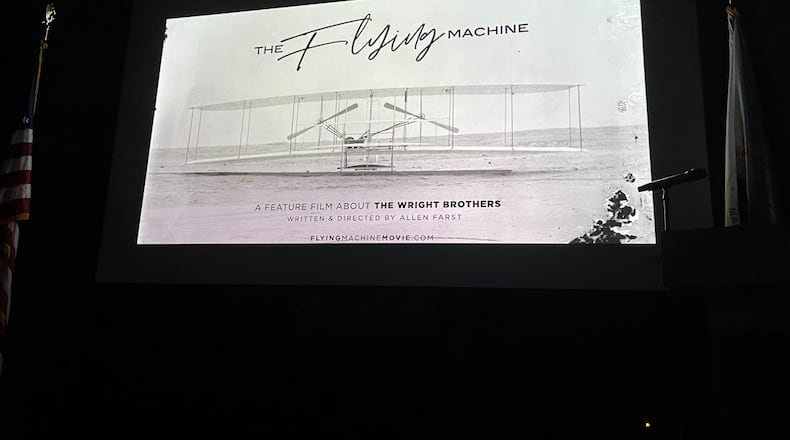Farst envisions a film based on the Tom Crouch biography “The Bishop’s Boys,” which Farst says he has optioned.
“Think about how many war movies there are,” Farst said Tuesday after a press conference at the South Williams Street offices of the Dayton Aviation Heritage National Historical Park. “Think about how many plane movies there are, not about the Wright Brothers. Even about the rugby team that crashed in the Andes. There are two movies about those guys ... But there are no movies about the Wright brothers? That’s crazy.”
Farst has had an increasingly visible track record. His past films include “Chuck Leavell: The Tree Man,” “Triangle Park,” a documentary about the first NFL game ever held, in Dayton and much more. “The Tree Man” has been on Amazon Prime, and “Triangle Park” is expected to be there soon.
But the fundraising challenge involved in this new effort is monumental.
Farst has started a web site, www.flyingmachinemovie.com, to encourage donations and the sale of merchandise that will assist the project.
“There’s always a lot going on behind the scenes that no one sees — and then they think you’re an overnight success when you finally get it to this point,” he said.
Amanda Wright Lane, great grandniece of brothers Orville and Wilbur Wright, and Stephen Wright, their great grandnephew, are on board.
Wright Lane, at Tuesday’s press conference, said about eight would-be directors have approached the family about possible Wright brothers projects in the past decade, but nothing has yet come to fruition.
“So we are really cheering Allen on to get this done,” she said. “And he couldn’t have chosen a resource better than ‘The Bishop’s Boys,’ from our point of view.”
The book is a deeply researched, comprehensive look at the Wrights’ lives and times, from births to deaths and plenty in between.
“I hope that Allen has a true sense of that, too, and he’s thinking about how he wants to tell that story,” Wright Lane said.
Both she and Stephen Wright were seen in a trailer for the film Farst showed during the press conference.
“We don’t want to lose to Canton, Ohio our story of pro football,” Farst said, referring to how “Triangle Park” captured the first NFL game in Dayton. “They have (NFL) Hall of Fame ... So I feel like this is our shining moment, right here, right now, and we really need to embrace this.”
The Wright brothers, of course, changed the world. They refined heavier-than-air, controlled flying machines in Dayton and in Huffman Prairie in northwestern Greene County, demonstrating one early machine’s viability with a brief 12-second flight above a beach on North Carolina’s Outer Banks on Dec. 17, 1903. They went on to form the Wright Company in 1910, where they began building and selling airplanes from West Dayton.
Farst said if the project can raise about $5 million to $10 million from the Dayton area, he’ll be satisfied. The rest could come from national sources, he believes.
“I’ll raise the rest from sponsors and airline manufacturers,” he said. “There are enough people who believe in what we’re doing here that we should be able to get this thing funded.”
About the Author




